Photo

Our blog has moved to our website news feed. Click here to visit us!
You can also follow us on Instagram, Facebook, and Twitter.
Thanks for stopping by!
10 notes
·
View notes
Text
Transitions in the Journal Display

The front covers (and contents!) of science news magazines are intriguing any time of year, but especially when transitioning from one year to the next.
Editors, artists, and photojournalists put together issues that highlight the biggest stories of the year, celebrate achievements and forecast the next big breakthrough, and tantalize with headlines that suggest findings to delight the most curious reader.
Above: New Scientist Dec. 18-31, 2021

Just three headlines on this issue of Science News hint at the wide range of topics covered in every issue: hope in the pandemic; shrinking birds; finger snap physics (say what?).

A new year often inspires us to focus on a healthy diet, and New Scientist picks up on that by explaining that a “self-indulgent mindset is key to diet success.” Sounds promising!

Science, the highly-respected, "premier global science weekly” from the American Association for the Advancement of Science, is fully accessible online, in a very satisfying format for web-based browsing.
The print issue offers the convenience of a quick scan of the contents, enormously useful summaries of research articles, relevant and timely news, and a wonderful break from staring at your computer or internet-capable device for hours at a time! Pick up an issue and take a meaningful break from studying for finals. Good luck with those, too!
#oberlin college#oberlin college libraries#science journals#print journals#science library#New Scientist#Science News#AAAS#science magazines
10 notes
·
View notes
Photo
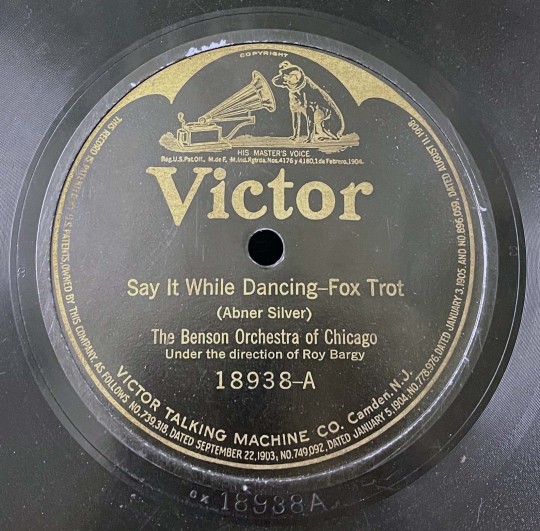



New Year, New (Old) Sounds in the Public Domain!
On January 1st, 2022, all sound recordings made before 1923 entered the public domain, an estimated 400,000 sound recordings that document the beginning of recording technologies and include a rich variety of musical styles, such as vaudeville, ragtime, and early jazz. Some notable examples highlighted by the Association for Recorded Sound Collections are “Crazy Blues,” performed by Mamie Smith and her Jazz Hounds in 1920, and a 1917 recording of “Dixieland Jass Band One-Step” by the Original Dixieland Jass Band. The 78 rpm records seen here are part of the Oberlin Conservatory Library’s James R. and Susan Neumann Jazz Collection, and the sheet music is part of the Stanley King Jazz Collection.
Learn more about the Music Modernization Act, passed by Congress in 2018, that allows these recordings to enter the public domain. Listen to pre-1923 sound recordings available at The Public Domain Review, the Internet Archive, and the National Jukebox at the Library of Congress. And lastly, join the virtual party for Public Domain Day on January 20th: A Celebration of Sound. Cheers!
#Oberlin#Oberlin College#oberlin college libraries#oberlin conservatory#conservatory library#public domain#jazz#neumann jazz#music history#Music Monday
86 notes
·
View notes
Text
Poems for the Planet
Here: Poems for the Planet (Copper Canyon Press, 2019) was just donated to the Science Library.
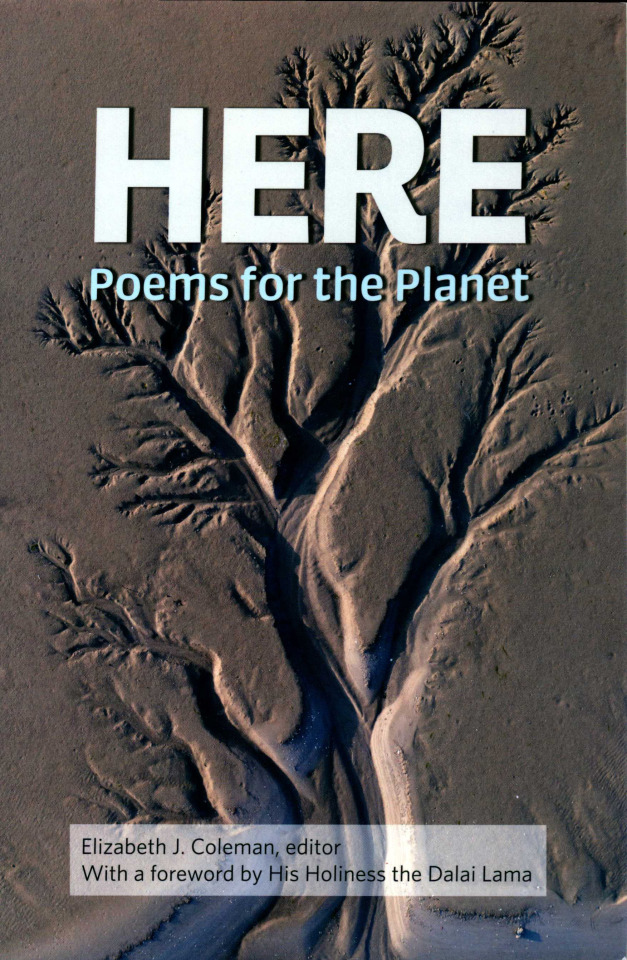
Edited by Elizabeth J. Coleman with a forward by His Holiness the Dalai Lama, the poems are thematically arranged: poems for our planet, for our endangered world, for the animals; poems that are the voices of young people, and poems that lead from inspiration to action. Just two are shared in the image below: “The Occupation” by Robert Bringhurst and “The Peace of Wild Things” by Wendell Berry.
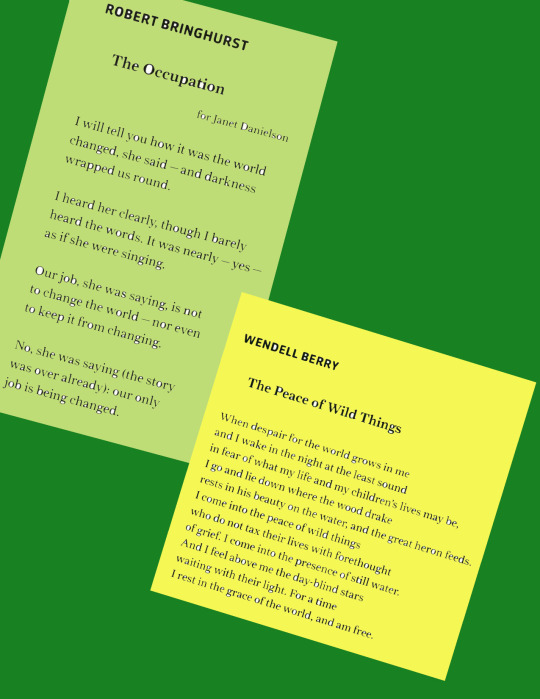
The collection concludes with a guide to activism by the Union of Concerned Scientists, which pledges to “use science to make change.” The final exhortation of the book is “Get Out There!” with this quote from Jane Hirshfield, founder of Poets for Science and celebrated author of many works of poetry and essays:
“The world asks of us
only the strength we have and we give it.
Then it asks more, and we give it.”
Acknowledgements:
“The Occupation” from Selected Poems. Copyright 2012 by Robert Bringhurst, published by Copper Canyon Press.
“The Peace of Wild Things” from The Selected Poems of Wendell Berry. Copyright 1998 by Wendell Berry, published by Counterpoint Press.
The collection Here: Poems for the Planet will soon be cataloged for the Science Library.
#oberlin college#oberlin college libraries#science library#new books#union of concerned scientists#environmental activism#science poetry
5 notes
·
View notes
Photo


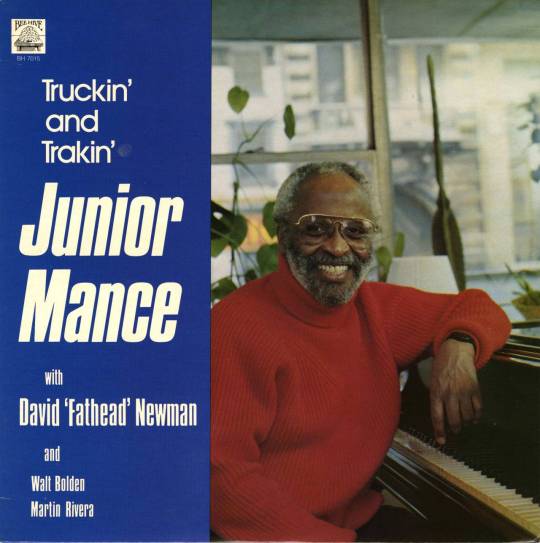

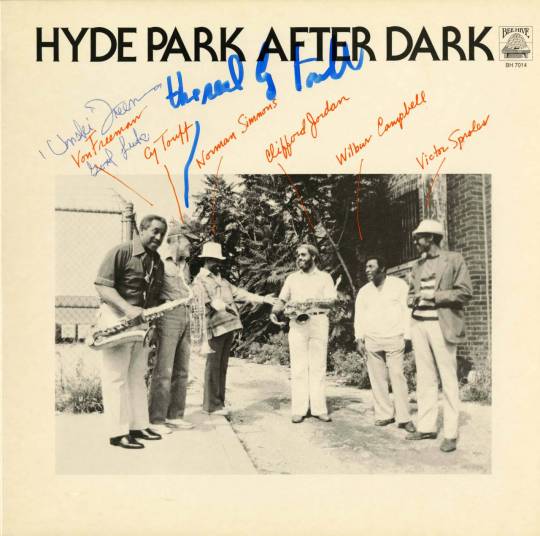


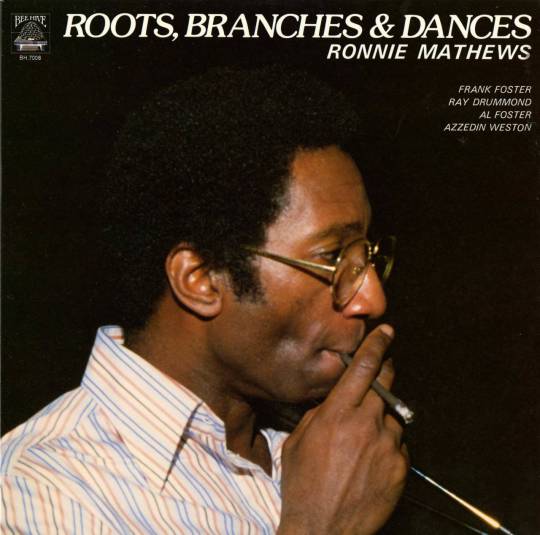
Jim and Susan Neumann’s Bee Hive Records
Bee Hive Records was founded by Jim and Susan Neumann, donors of the James R. And Susan Neumann Jazz Collection in the Conservatory Library’s Special Collections. The label was active from 1977 to 1985, releasing seventeen LPs that featured an impressive roster of established jazz talent. Mosaic Records released The Complete Bee Hive Sessions (#261) as a twelve-disc limited edition box set in 2015. This CD set features the majority of the material from the original LPs along with a variety of previously-unreleased content. Although now out-of-print, you can check out Oberlin’s copy by visiting the circulation desk at the Conservatory Library. Happy listening!
#Oberlin College Libraries#Oberlin#Oberlin College#oberlin conservatory#oberlin conservatory library#conservatory library#neumann jazz collection#music special collections#special collections#music library#MusicMonday
11 notes
·
View notes
Text
Need a review article? Done.

We are inching ever closer to holidays, fun in the snow, winter break, and a bit of R&R. You undoubtedly have reading to do before then - and might need a good, in-depth review article to give context to a project or paper you’re working on. That’s our cue to highlight --
Annual Reviews!

The volumes of Annual Reviews seen here are all accessible online, so you don’t need to plow through the structure in the science library’s front window. Go directly to annualreviews.org, where you can search across all of 50+ journals, in subjects ranging from anthropology to economics, environment, geology, neuroscience, sociology, statistics, virology... it’s quite the treasure trove for the social and natural sciences, including medicine and public health.
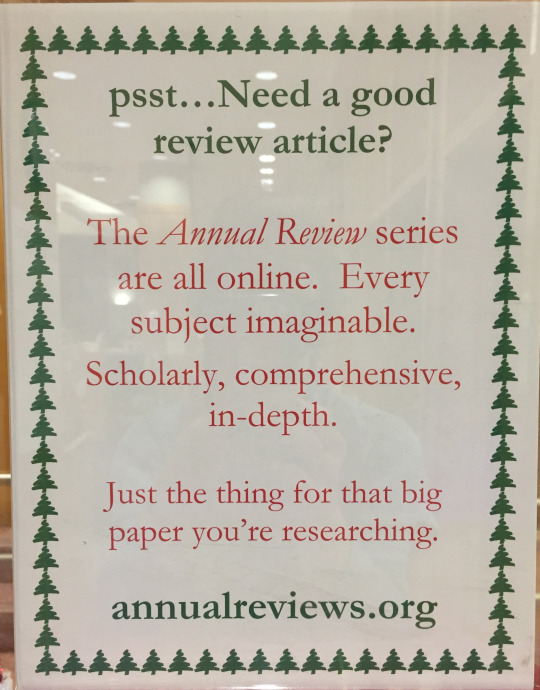
Every review article synthesizes data and information from dozens of primary sources, with citation lists that can exceed 100 references - a great source of further reading. Take a look!
#oberlin college#oberlin college libraries#science library#review articles#secondary sources#annual review
14 notes
·
View notes
Photo

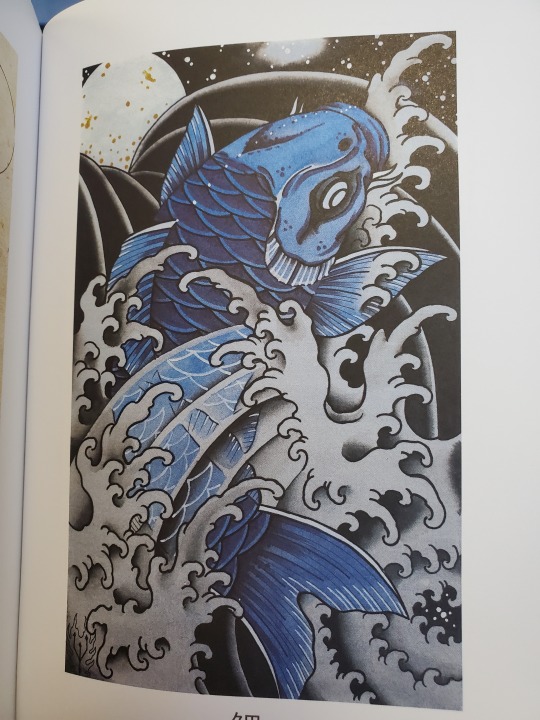
Japanese Tattoos: Meanings, Shapes and Motifs - Yori Moriarty GT2346 J3 M6713 2018
The intimate relationship of Japanese tattooing with the dark world of the yakuza has helped cover this form of artistic expression with an aura of mystery. But the culture of irezumi is deep and rich in meanings, shapes and motifs that have gone from color woodblock prints to being applied to the skin to beautify and protect their bearers.
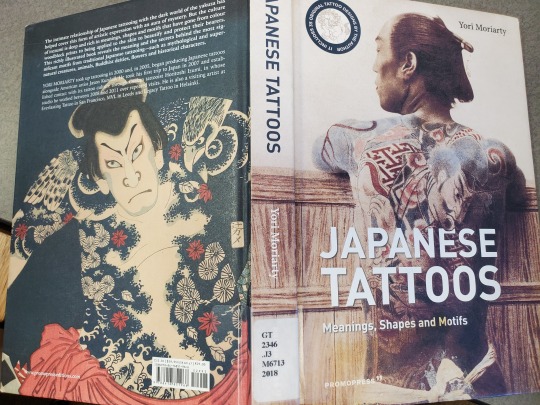
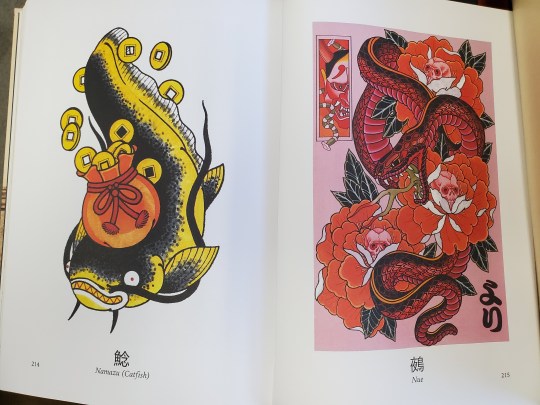
This richly illustrated book reveals the meaning and secrets behind the most significant motifs from traditional Japanese tattooing. Readers will discover the origin and meaning of each visual representation of the most frequent themes in this art form. The publication begins with a brief review of the history of Japanese tattoo art and then examines each subject (water, mythological animals, real animals, mythological characters, historical characters, flowers, shunga and yokai) through images and descriptive texts; it also includes a gallery of original designs by the author and a glossary.

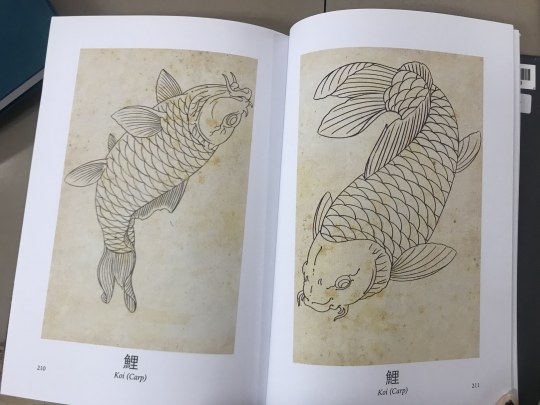
This book can be seen at the Clarence Ward Art Library (GT2346 J3 M6713 2018).
#Oberlin College#Oberlin College Libraries#Clarence Ward Memorial Art Library#Oberlin Art Library#Oberlin Art#tattoo art#Japanese tattoos#tattoos
11 notes
·
View notes
Photo




Welcome Winter!
While it’s not technically winter just yet (it will officially arrive on December 21 this year), it is icy cold and snow has finally been making an appearance on campus.
Above are some campus views from the 1980s-1990s of the snowy Oberlin campus, which will probably be here before we know it! Just be sure not to turn into a snow-person outside of Hall Auditorium like the two in the top photograph!
Want to see more snowy scenes from Oberlin? Feel free to contact us to check out more photos!
#Oberlin#Oberlin College#Oberlin College Archives#Winter#Campus Views#Oberlin Campus#Oberlin in Winter
16 notes
·
View notes
Text
Study Spaces for Everyone
According to the students there are many great places to study in the Terrell Main Library with four unique floors. So let’s hit some highlights starting at the top floor (4th) and moving down.

On the 4th floor you will find plenty of natural light with big windows looking out the front of the building and into the courtyard. Many days are too blustery and grey to go outside to study, but the windows make for a nice view. You can sit at a table or cozy up in a womb chair to enjoy a bit of natural light.
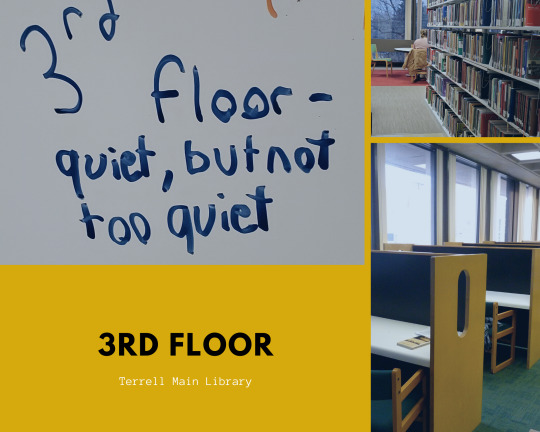
Shh... The 3rd floor is known to be a very quiet place to study. Here you will find out of the way study carrels for two, the inner core filled with the East Asian collections, many comfy chairs, and various tables where you can concentrate in a calm quiet space.

Quieter then Main, but not as silent as 3, the 2nd floor has many unique places to sit. You can climb on the cushion pit under the glass ceiling, curl up in a womb chair, or spread out at a giant table. According to some, “2nd floor is where it is at.”

If you like to study where there is a steady rumble of voices, computers, and printers, Main is your floor. Whether you are here to study or just to be seen, plenty of folks know if you want to meet up with friends, just take a seat in the Academic Commons. If group work is your game, then reserve a group study rooms on the Main level. Oh, and don’t forget if you’re hungry, you can stop for some food and drink at Azariah’s Cafe.
Yes, Main is nice, but if the space doesn’t meet your needs, then check out the other libraries — Art, Conservatory or Science — each with their own unique feel. Check us out on Instagram (@oberlin.college.libraries) to get more ideas of places to study.
4 notes
·
View notes
Photo

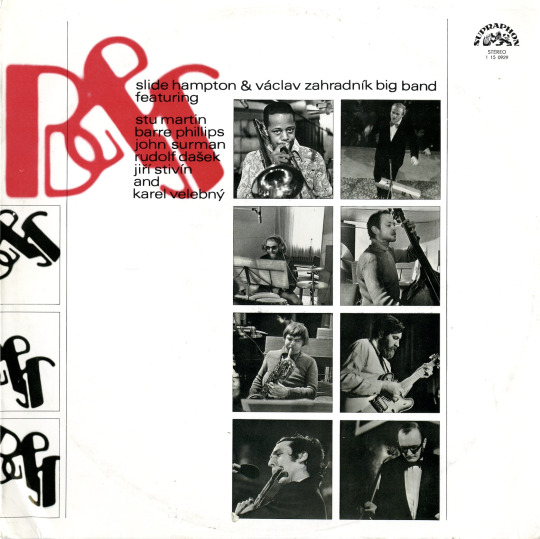
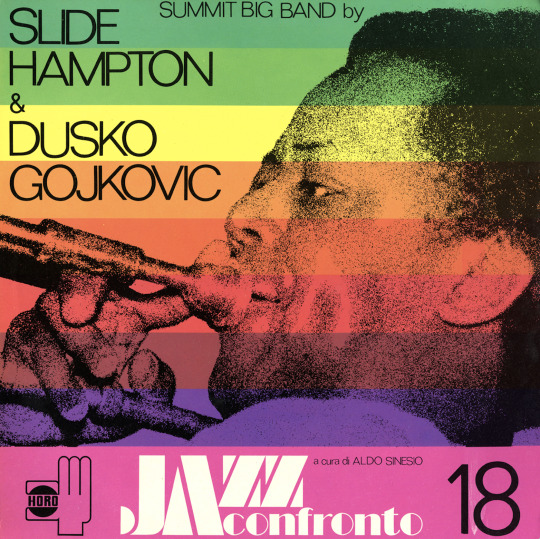


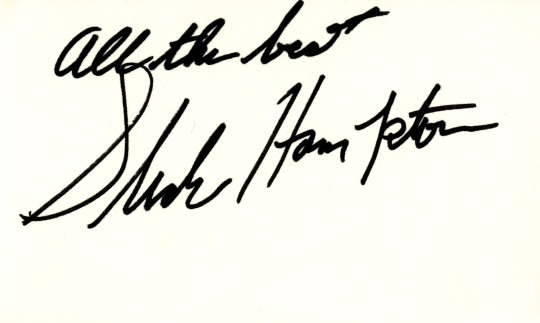
RIP Slide Hampton
Locklsey Wellington Hampton, better known as Slide Hampton, passed away last month at the age of 89. Quoting from his obit in the New York Times, Hampton was a “triple threat— not just a virtuoso trombonist but also the creator of memorable compositions and arrangements.”
Shown here are just a few LPs and signed memorabilia from the extensive James R. and Susan Neumann Jazz Collection, part of the Oberlin Conservatory Library’s Special Collections. A complete list of LPs in the Neumann Collection that feature Hampton as author can be viewed from this link to the library catalog. As always, contact [email protected] for more information.
#Oberlin#Oberlin College#Oberlin College Libraries#oberlin conservatory library#conservatory library#oberlin conservatory#neumann jazz collection#music special collections#MusicMonday#jazz#jazz history#special collections#trombone#Slide Hampton
6 notes
·
View notes
Text

Animals are wonderful. Libraries are wonderful. Unfortunately though, sometimes animals and libraries don’t mix. Please be sure to review OCL’s Animal Policy before visiting the libraries with a pet or emotional support animal.
Animal Policy:
Oberlin College Libraries do not permit any animals in the Libraries outside of certified service animals and animals featured in programs sponsored by the Oberlin College Libraries.
Guidelines:
As a general rule, animals are not allowed in the Libraries.
The only animals permitted in the Libraries are certified service animals as defined in the Americans with Disabilities Act (ADA).
Emotional Support Animals that are permitted under the Federal Housing Act that do not separately qualify as certified service animals under the ADA are not permitted in the Libraries.
Anyone entering the Libraries with an unauthorized animal will be asked to leave.
Above image: A dog dressed as a librarian and a speech bubble containing the text “NEW ANIMAL POLICY!”
4 notes
·
View notes
Text
What is Science and What is the Double Bind for Women of Color in STEM?
Two new books in the Science Library address these questions. A Guide for Those Who Love It, Hate It, or Fear It is the subtitle for Elof Carlson’s What Is Science? It is the newest book authored by Carlson, a geneticist and historian of science who taught most recently at Stony Brook University. Many more books by Carlson can be found in the OhioLINK central catalog.
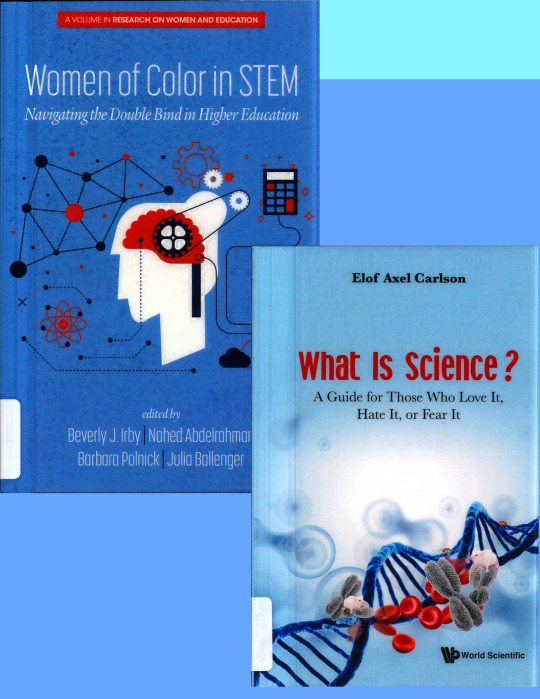
Women of Color in STEM: Navigating the Double Bind in Higher Education reveals the “environmental and social barriers including stereotypes, gender bias, and the climate of science and engineering departments in colleges and universities that continue to block women's progress in STEM.”
A related work was published by the National Academies of Science, Engineering, and Medicine, proceedings of a workshop held in 2020: The Impacts of Racism and Bias on Black People Pursuing Careers in Science, Engineering, and Medicine. Video from the workshop can be viewed at the National Academies website.
#oberlin college#oberlin college libraries#new books#science and society#women in science#minorities in science
5 notes
·
View notes
Photo

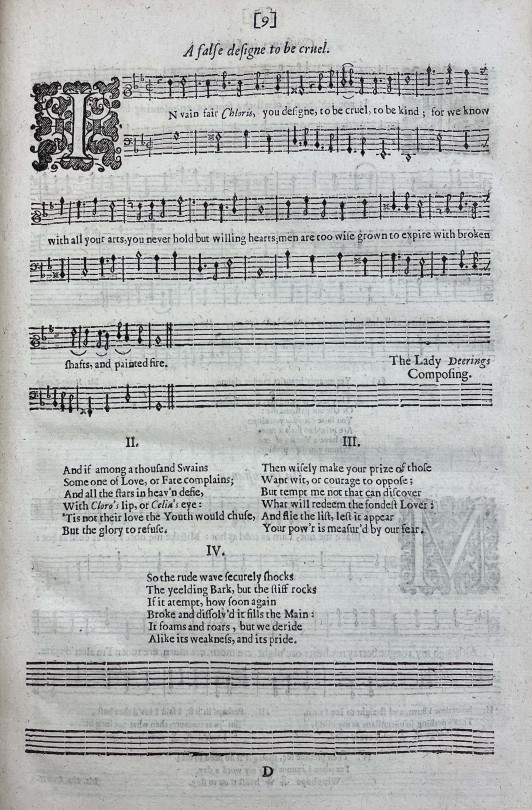
“The Lady Deerings Composing”
Recently on display for a music history class was the 1659 printing of Select ayres and dialogues for one, two, and three voyces: to the theorbo-lute or basse-viol, part of Oberlin’s Frederick R. Selch Collection of American Music History. The title page lists composers John Wilson, Charles Colman, Henry Lawes, William Lawes, Nicholas Laneare, William Webb, and “other excellent masters of musick.” Among those other masters is Lady Mary Dering (née Harvey, 1629–1704), whose composition, “In vain fair Chloris, you design, to be cruel, to be kind,” is on page 9, and is an early printing of the first music published in England to credit a woman composer. Dering’s work first appeared in a 1655 edition of the second book of Ayres and Dialogues by Henry Lawes, who included three of her songs and dedicated the book to her.
View this and many other books from the Oberlin Conservatory Library’s Special Collections online at the Internet Archive.
#Oberlin#Oberlin College#Oberlin College Libraries#oberlin conservatory library#conservatory library#oberlin conservatory#music special collections#special collections#music history#Music Monday
41 notes
·
View notes
Text
COP26 in context and more
The United Nations Climate Summit - the 26th Conference of the Parties - has left many with mixed feelings. Understand why with Nature: “The Glasgow Climate Pact is a step forward, researchers say, but efforts to decarbonize are not enough to limit global temperature rises to 2 °C.“ (Nature.com, Nov. 14, 2021).
Two new books, just received in the science library, provide context for the urgency behind COP26 negotiations:
Saving us : a climate scientist's case for hope and healing in a divided world / Katharine Hayhoe
Climate chaos : lessons on survival from our ancestors/ Brian Fagan and Nadia Durrani

The official summation is COP26: The Negotiations Explained. Media outlets worldwide focused on the UN Summit for the past two weeks. One of many good sources: PBS News Hour Climate Change.
Beyond climate, other titles on the new book shelf hint at the wide range of topics to explore in the collection - perfect for reflective reading during the upcoming Thanksgiving break!

Loon lessons : uncommon encounters with the great northern diver / James D. Paruk
The secret of life : Rosalind Franklin, James Watson, Francis Crick, and the discovery of DNA's double helix / Howard Markel

What's eating the universe? : and other cosmic questions / Paul Davies
Rule of the robots : how artificial intelligence will transform everything / Martin Ford
Swarm intelligence : from social bacteria to humans / editor, Andrew Schumann
Take a look. There is something to delight and excite curiosity in every reader.
#Oberlin College Libraries#oberlin college#new books#science library#COP26#climate summit#swarm intelligence#loons#rosalind franklin#dna history#AI#cosmic#katherine hayhoe#climate chaos
3 notes
·
View notes
Photo
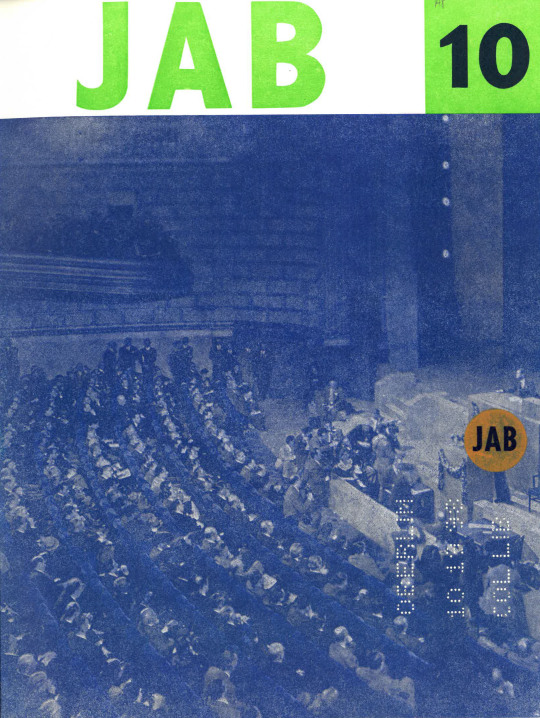
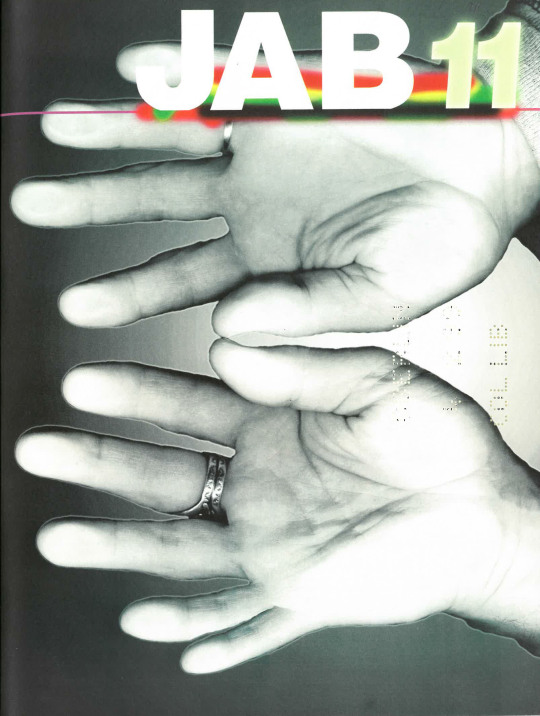



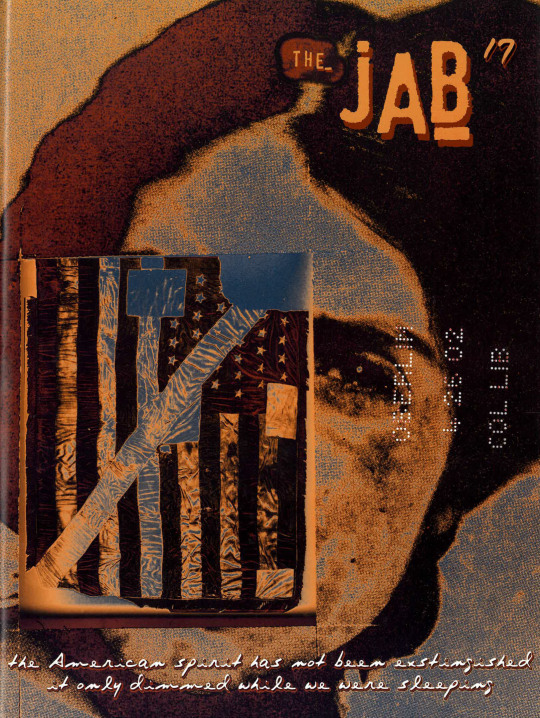
Journal of Artists’ Books: Meaning in Print
Journals designed by artists
And one day he realized that very few people went / to art galleries and museums but many people looked / at books and magazines as he did and they got / them through the mail as he did. / Moral: it’s difficult to put a painting in a mailbox.
– “Ingres and Other Parables” by John Baldessari (JAB 31 page 6)
Although written in the 1970s Baldessari’s poem rings true today. Are people no longer visiting museums? And if not, how are they interacting with art? How is value determined for art when it is a physical but untouchable canvas vs. a stack of reproducible pages you can hold? Is value fractured or demeaned if art exists in multiple places at once?
The Journal of Artists’ Books (JAB) has placed itself in the murky waters of the world of reproducible media, filled with conflicting definitions and perceived worth. JAB explores and articulates the gaps and inconsistencies in our constructed definitions of books and art and the way value is then ascribed.
Keep reading
#Oberlin#Oberlin College#Oberlin College Libraries#Art Library#Artists' books#Journal of artists' books#museum studies#reproducible media#brad freeman#john balderssari#marcel duchamps#box in a valise
12 notes
·
View notes
Photo

The Oberlin College Archives are hiring!
Are you a current or recent graduate student in library science, archival studies, or history? Just starting out in your archival career? Our Archives and Special Collections Intern position may be the perfect opportunity for you!
You must have a Masters degree or have a substantial amount of coursework towards your Masters degree to qualify for this position. You will gain invaluable experience in both archives and special collections, including digital work.
You can apply at this link. Please feel free to contact us with any further questions about the internship.
10 notes
·
View notes
Photo

Have you ever seen an episode of Gunsmoke where African American soldiers were part of the regiment guarding the prairie? How about Bonanza? What about The Big Valley? All three were popular television series in which fiction and fact were often blended to add a semblance of reality to certain episodes. All three were set in the western frontier and at similar time periods in American history. Gunsmoke, in particular, issued several episodes depicting the U. S. Calvary scouting the Kansas frontier in hopes of squashing potential “Indian uprisings” and “protecting white settlers" who lived away from the main population clusters from "invasion by Indians." Bonanza, set in Nevada between 1861 and 1870, often had the cavalry in pursuit of "renegade Indians"
One episode of The Big Valley, set in California, stands out in that it mentions the fact that the Buffalo Soldier was a courageous military unit known for their loyalty and passion to serve. The episode featured African American actor, Yaphet Kotto, in the role of Damien. He gets the attention of Victoria, played by Barbara Stanwyck, when her son, Jerrod, played by Richard Long, recognizes Damien as no ordinary prisoner but a member of the Buffalo Soldiers.
Who were these Buffalo Soldiers and what role did they play in America’s history?
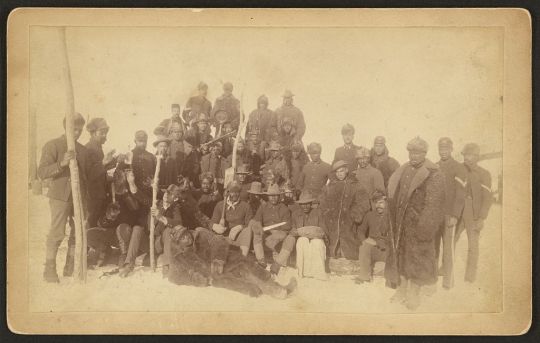
According to the federal government sources, the alias ‘Buffalo Soldier’ was the name used by the indigenous population to describe the African American soldiers of the 10th Cavalry, a regiment created to assist in the United States campaign to subdue the Indigenous peoples living on the western frontier.
The regiment, originally stationed at Fort Leavenworth, Kansas, suffered many set backs at the outset. In addition to a lack of clerical assistance and necessary number of recruits needed to build the regiment, the first officer appointed to lead the troops resigned. An outbreak of cholera also threatened the survival of the troops.
These soldiers also battled discrimination of the worst kind from within and outside of the military. Their bravery, integrity, and unequivocal commitment to the United States should never be overlooked. In addition to engaging in several battles, including helping to secure the victory on San Juan Hill, “the soldiers of the 10th Cavalry scouted thousands of miles of territory, built forts, opened more than 300 miles of new roads, installed over 200 miles of telegraph lines, located important water sources, protected stagecoach and mail routes, and escorted cattle drives and wagon trains.” (Santa Fe National Historic Trail)
As you celebrate Veterans Day this year, remember the Buffalo Soldiers and all those who serve and have served the nation.
Check out the following Federal sites and resources to find out more about the Buffalo Soldiers and their place in America’s history:
Black Soldier battled prejudice with honor
Buffalo Soldiers Study
Fort Leavenworth and the Establishment of the 10th Cavalry
History of the 10th Calvary
Image: Library of Congress Prints and Photographs Division Washington, D.C. 20540 USA
#Oberlin College Libraries#Mary Church Terrell Main Library#government resources#depository library#Veterans Day#Buffalo Soldiers#African-Americans
23 notes
·
View notes